
An Afternoon With The Stratemeyer Archives
The following article appeared in the Dec. 1999 issue of Yellowback Library
By Timothy P. O'Herin
In April 1999, I had the privilege of being one of the first series book collectors to browse through the archives of the Stratemeyer Syndicate, housed in the famous New York Public Library on Fifth Avenue, Midtown Manhattan.
Although I only spent a few hours at the library one afternoon, and I went through three boxes and one scrapbook, I found a few interesting items of interest to Stratemeyer series collectors, especially fans of Nancy Drew and her author, Mildred A. Wirt.
My visit to the library occurred during a week-long trip to the East Coast, which culminated in attending the annual meeting of the South Jersey Series Collectors in Sea Bright, NJ. At that meeting I met James D. Lawrence Jr., son of the late Jim Lawrence, one of the syndicate’s writers in the 1950s and 1960s. Jim’s son works for the Chubb Insurance Company, which made a substantial financial grant to the library for the initial cataloguing.
The day before the Sea Bright meeting, I visited the library in hopes I could go through some of the Stratemeyer archives. I was not certain I would be given permission, particularly since I am only a fan, not a researcher. The only information I had about the archives was obtained from the NYC Public Library web site, which had a few details about the collection. I wasted a good hour at the library just trying to determine where the files were kept and how to get permission to go through them. I finally determined that one gentleman, working in a small office off a large exhibit room, was the person to see. He was very friendly and helpful. I filled out a small identification form that allowed me room to explain my academic credentials. I was afraid my credentials might be insufficient. But he was very kind and after looking over my information, gave me a 24-hour pass to the archives room.
The archives room and the main research library are easy to find, I believe on the third floor. The archives room is secured by a door that can only be opened when you flash your pass to the attendant. Once inside, I explained my mission and I was given a simple catalog of about 60 pages listing the archives by material. You may only acquire four boxes of items at one time. They also require that you give them several hours to find the material. Since the time was approaching noon, I said I would be back after lunch. I used that time to attend an antiquarian book fair being held nearby. The book fair was very disappointing. There were book dealers from around the world, and I only recall seeing some early Tom Swifts in dust jackets. Otherwise very little children’s mystery series books. The South Jersey Series Collectors meeting was a treasure chest of books and most at reasonable prices.
Returning to the library, my requests were waiting for me. Since I was allowed only four items, these were my requests:
1) Letters between the Stratemeyer Syndicate and Mildred Wirt, the original author of the Nancy Drew Mystery Series. Also letters with other syndicate writers.
2) Correspondence of Andrew Svenson, a syndicate partner and employee from 1948 to his death in the mid-1970s.
3) A scrapbook covering a 30-year period from about 1940 to 1970.
4) Fan letters from the 1930s to the 1970s.
I had several motives in my search. I am a big fan of Mildred Wirt, and surprisingly not because of her work with Nancy Drew, but rather her own Penny Parker series, which I tremendously enjoy. Besides, she is one of the main freelance contributors to the syndicate.
I also have a special interest in Andrew Svenson since he wrote the Happy Hollisters, and that was my first series to read and collect as a child. I also corresponded with him over several years in the 1960s. I hoped to run across my own fan letters, but I was not successful in that venture.
During the 1960s, I also corresponded with Harriet Adams, daughter of Edward Stratemeyer, who founded the syndicate and passed on it ownership to daughters Harriet and Edna. I read about Harriet in a newspaper article and contacted her. In one of her letters to me, she asked for a copy of the newspaper article to include in her scrapbook. Since I have always enjoyed putting together scrapbooks, I used to think what a thrill it would be to see one of the syndicate’s scrapbooks.
I went to the public library that day not knowing if I would be successful, so I was not prepared for the treat that was in store for me. I did not have any type of writing material and even had to borrow a pencil from the library. I also used small strips of paper the library provided to write down details as I came across them. Therefore some of the details below are from small notes I took, or from my memory. So I stand to be corrected.
The Mildred Wirt letters were a real joy to read. They consisted of her correspondence to the syndicate and the syndicate’s return letters. One of the earliest letters I saw was dated Dec. 15, 1929, and regards payment of $125 for a manuscript. I believe this may be in reference to her work on the Nancy Drew book, “The Hidden Staircase. “ I cannot recall if this letter was from Edward Stratemeyer, but I did see actual correspondence from him to her. Stratemeyer died a short time after the Nancy Drew books were published. An interesting note about “The Hidden Staircase” is that the story outline Stratemeyer gave Mildred was for the mansion the “staircase” was in was to be from revolutionary times. Mildred wrote back in Dec. 1929, that it would be unlikely for the house to be from revolutionary times, since the region Nancy lived in was the Middle West. In the book, on page 34, she wrote vaguely the mansion “was built before civil war time.”
Many of the letters were simple acknowledgment of receipt of story outlines or payment for completed manuscripts. Mildred’s letters were always typed, and usually carried little notes about the weather, and other general, passing comments. I don’t recall her having personal stationary. They were usually typed on plain typing paper. I believe Mildred was living in Ohio during this time.
In one letter, Mildred wrote that she enjoyed writing for the Stratemeyer Syndicate because the plots are “ready made.” And in a letter dated March 26, 1934, she wrote: “I have always been rather partial to Nancy. It will seem quite like old times to be writing about her again.”
In a letter dated June 11, 1936, she wrote of mailing the manuscript for Nancy Drew and the Mystery of the Ivory Charm the day before. On June 20th, she writes of receiving the check for the book “several days ago.”
In a letter dated September 20, 1936, Harriet Adams writes about Mildred visiting the syndicate headquarters, although I don’t recall whether it was an invitation or in reference to a past visit. One letter noted a payment of $125 for the Mystery of the Brass Bound Trunk. In my notes I recorded something regarding a Christmas Bonus in a letter dated Dec. 19, 1929, so I suppose the syndicate rewarded her work with something extra.
I came across some comments about the Nancy Drew movies, starring Bonita Granville, produced and released in the late 1930s.
One letter from the syndicate noted that “we have not found that having Nancy Drew on the screen has increased sales of the books.” Mildred wrote on Aug. 5, 1939, that, “as yet I have seen only the first Nancy Drew picture.”
Not all the letters concerned Nancy Drew stories. One letter concerned the Doris Force books Mildred wrote for the syndicate. And in another, regarding “Ruth Fielding and Baby Jane,” either Mildred or the syndicate wrote that upon seeing the book, they thought “the artist did not do justice to Ruth’s infant.”
One of the more interesting correspondence I saw was between Harriet Adams and Julie Campbell Tatham, co-writer of such popular series as Trixie Belden, Vicki Barr and Cherry Ames. The letters occurred around 1957 and they consisted of Ms. Tatham seeking a writing position with the syndicate. Mrs. Adams responded with glowing praise for her work, but questioning whether Julie would want to relocate for the job. Julie indicated she would be willing to commute. There were only a few letters in this brief correspondence, and best of my knowledge no position was ever open to her at the syndicate. It was a brief correspondence and I suspect Harriet had no position to offer and was only being cordial in replying to her.
In going through the Andrew Svenson letters, I came across a handwritten letter on yellow legal paper addressed to Harriet. This was written by Svenson during a trip to Europe in the early 1960s. This trip prepared him for his Happy Hollisters books in Europe, including the “Cuckoo Clock Mystery” in Germany, the “Swiss Echo Mystery” in Switzerland, “Punch and Judy Mystery” in Italy, and “Mystery of the Midnight Trolls” in Iceland. It is well known the syndicate partners enjoyed taking summers off to travel. It is amusing that while traveling he found some syndicate series books that were not copyrighted and therefore the syndicate was not getting paid for these books. He inquired if he should approach the publishers himself about this.
I also went through many fan letters covering a 30-year period. One fan of the Ted Scott Flying Stories (1927-1943) suggested an elaborate storyline where Ted is killed after a plane crash in the mountains, but on his deathbed he turns over his interests to one of his buddies.
In reading through some of the fan correspondence of Christopher Cool, Teen Agent, one boy asked for a description of the author. The return letter from “Jack Lancer” was highly descriptive and suggested some strong, military type of person. Not aware of the history of the series, and knowing all too well the author’s names were fictional, I suspected the description was probably as fake as the name Jack Lancer. However, upon meeting Jim Lawrence in Sea Bright the next day, and recounting the story, Jim said the description could have been of his father, who created the series and wrote the initial volumes.
The scrapbook I went through was fun to look at, and some of the articles I saw in it I had seen before.
I hope by this article to bring to Yellowback Library readers information about the syndicate collection at the New York Public Library and hopefully stimulate others to pursue information at the library, either for personal or research reasons. Also I believe series book collectors need to make an effort to encourage the library to seek more funding to complete the work done in opening the files and presenting a major exhibit of the books, letters, artwork, etc. that they hold. I intend to contact the company I work for and encourage a grant to this effort. Perhaps some Yellowback readers might be in a position to do something similar with companies they are affiliated with.
Jim Lawrence played a major role in bringing the Chubb Insurance Company and the library together. But he is quick to credit others. In an email from Jim he wrote:
“Several prominent Stratemeyer researchers deserve credit as well. Jack Dizer, Deidre Johnson, Ilana Nash, James Keeline and Kathleen Chamberline flew in to New York to preview some of the collection and have lunch with one of the officers of Chubb.”
And he says there is still much to do to preserve the syndicate’s archives for future generations.
I would suggest all Yellowback Library readers consider sending letters to the library encouraging more work be done with the Stratemeyer Syndicate archives.
In a related effort, I sent a letter to the chief Chubb Insurance Company official responsible for obtaining the $75,000 grant to the library. I thanked him for his efforts.
Yellowback Library is a publication devoted to the collector, dealer, and enthusiast of juvenile series books, dime novels, and related literature. It was founded in 1981 and is published monthly. For more information about Yellowback Library, contact publisher Gil O'Gara, P.O. Box 36172, Des Moines, IA 50315 or call (515) 287-0404.




























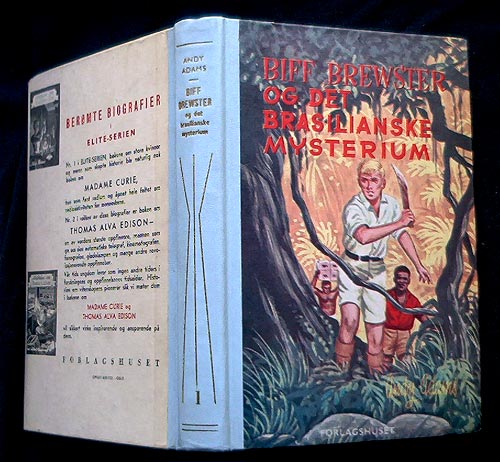

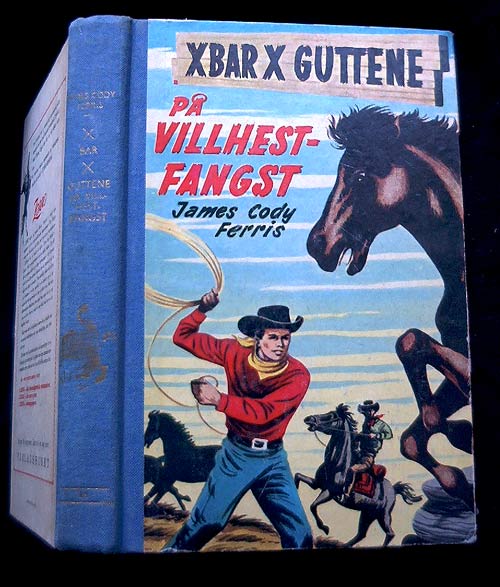


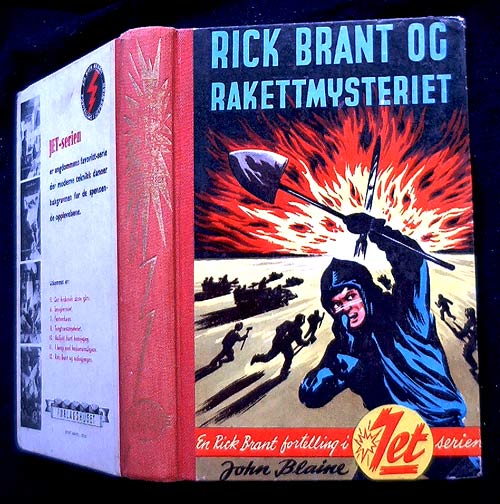
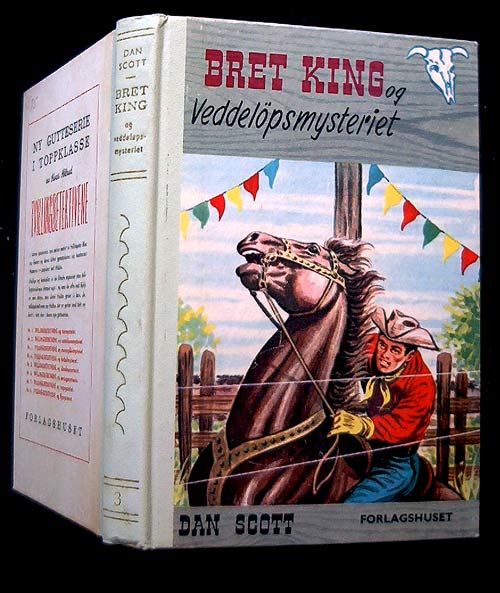

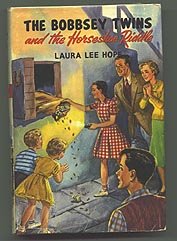
No comments:
Post a Comment